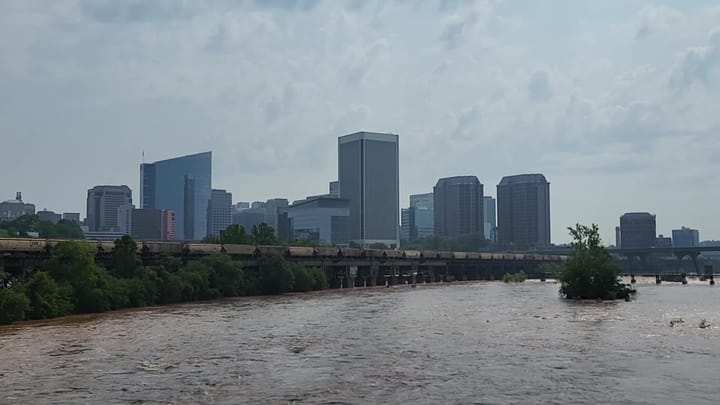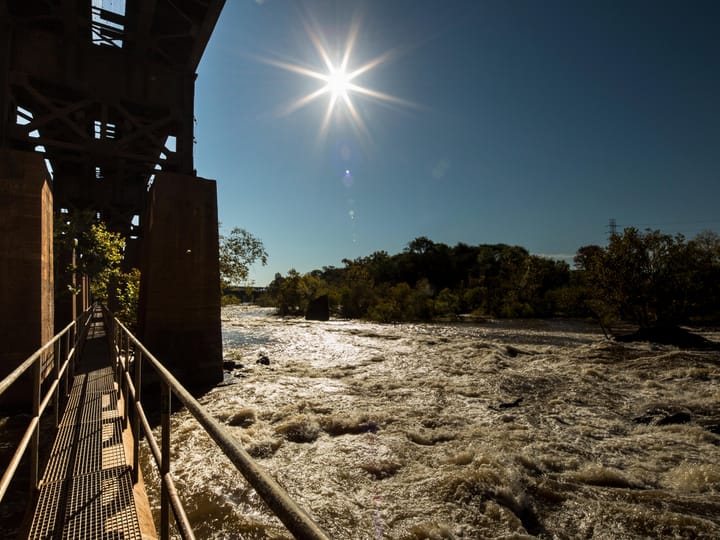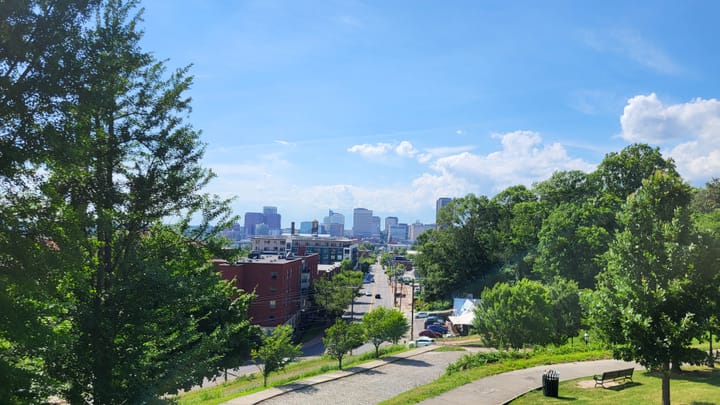
Summer is here to stay in RVA
After Richmond hit 82 degrees on May 19, we did not reach 80 degrees again until the last day of the month. Even into the start of June, we avoided any serious heat and enjoyed some pleasantly cool nights in the upper 40s and lower 50s.
All told, we had 15 consecutive days below normal between the end of May and the first few days of June. In fact, the first half of May was actually warmer than the second half of May by 2.2 degrees.
But it’s gone now. And it’s not coming back — probably until the fall.
No massive heat waves appear ahead in the next couple of weeks, but most of the data suggests temperatures near or above normal for the next 14 days. Normal afternoon temperatures during this time are in the middle to upper 80s. Nights are lower to middle 60s.
Summer is here
At least meteorological summer is here, defined as the three warmest calendar months of the year. Astronomical summer, what we are taught in grade school, begins with the summer solstice in about 10 days.
The summer solstice is the moment each year when Earth’s northern hemisphere is tilted the most toward the sun. From our vantage point on the day it happens, the sun reaches the highest in the sky at midday, and it gives us the most daylight of any calendar day.
Because Earth’s orbit is not a perfect circle, and a day is not precisely 24 hours long, there is some wiggle room around the precise time of the solstice. This year, it is Friday, June 20, at 10:42 p.m.
Ironically, Earth is farther from the sun during summer versus the winter. The difference is small, but noticeable. We are farthest on July 3, a day called aphelion. Conversely, we are closest during the first week in January. That day, perihelion, comes again on January 3, 2026.
Even though the sun is highest in the sky on the first day of astronomical summer, the northern hemisphere continues to warm more during the day than it can cool at night through the middle of July. As a result, the climatologically hottest days of the summer in Richmond are well after the solstice, when the average high temperature is 89.8 degrees between July 9 and July 16.
Richmond’s infamous humidity returns
But no matter how you want to define summer, when you step outside, you’ll know it's here.
Wednesday will bring a brief easing of the humidity and an afternoon in the 80s, then we will likely have back-to-back 90-degree days for the first time this year on Thursday and Friday.
A weak system slowly pushes through this weekend, spawning scattered showers and thunderstorms both days. There is a better chance to get those showers and storms on Sunday versus Saturday, but most of the time this weekend, it will simply be warm and humid with sun and varying amounts of clouds. Afternoon temperatures this weekend away from the showers will be in the 80s.
The Richmonder is powered by your donations. For just $9.99 a month, you can join the 1,000+ donors who are keeping quality local journalism alive in Richmond.
Storms next week
Next week, afternoons will average in the middle to upper 80s, and the humidity will be consistently high — the highest so far this season. Very small disturbances will touch off scattered showers and thunderstorms next week, but pinpointing the precise time and place for them is an exercise in futility.
Thunderstorms are smaller and shorter-lived than the larger rainfalls we get in the fall, winter, and spring, and that is part of the reason they are more challenging to forecast.
In addition, the atmospheric drivers of precipitation are weaker and more subtle during the summer. For example, areas of high pressure away from summer are larger and stronger, and the storms are larger in size with lower pressure (hurricanes are a notable exception).
Taken altogether, this makes the atmosphere more challenging to represent mathematically — those computer models you hear about — so very specific thunderstorm forecasts several days away should be viewed skeptically, if not outright ignored.
Certain weather patterns that can persist for a few days do build confidence in forecasting shower and thunderstorm development, which is why precipitation is expected to be near or perhaps slightly above normal over the next two weeks, but that is far from a lock.
Fortunately, rainfall in Richmond since the first of the year is 26% above normal, so there is no imminent threat of drought.
In fact, in some ways, the next two weeks of weather may end up being relatively — normal.






